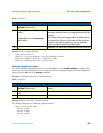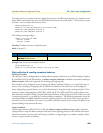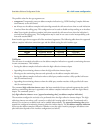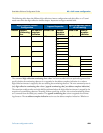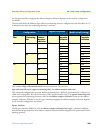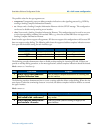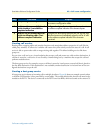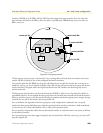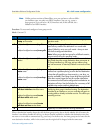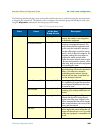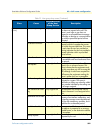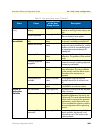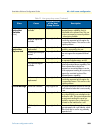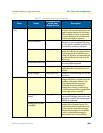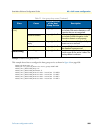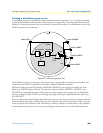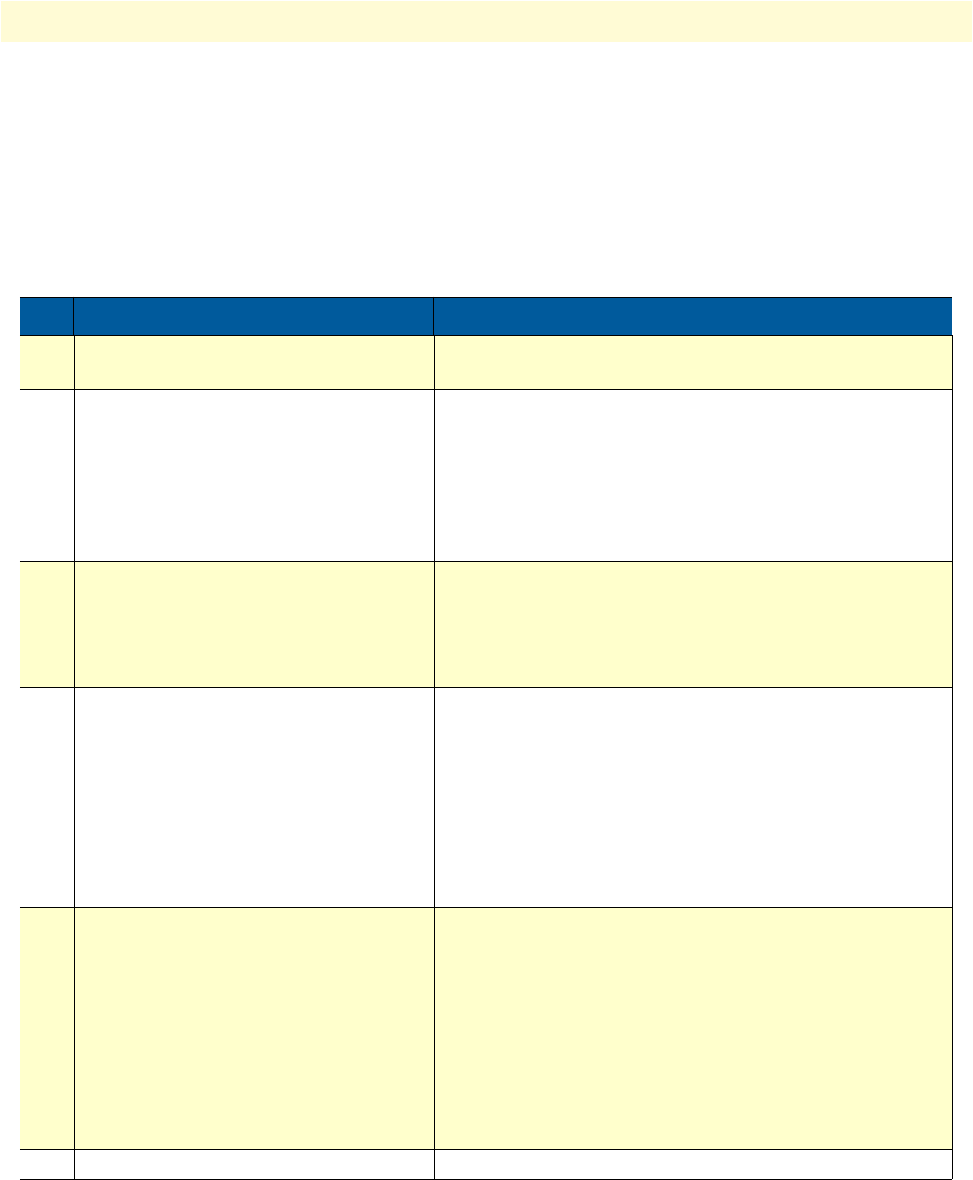
Call router configuration task list 499
SmartWare Software Configuration Guide 40 • Call router configuration
Note Unlike previous versions of SmartWare, now you can hunt a call over differ-
ent interface types, not only over ISDN interfaces. You can, e.g. create a
hunt group to try to call over a H.323 interface and, if this call fails, do a
fallback to an ISDN interface.
Procedure: To create and configure a hunt group service
Mode: Context CS
When a destination interface drops the call, the hunt group service has to decide whether this is because the
interface is not able to handle the call (e.g. no bearer channel available) or whether the destination user does
not want or is not able to communicate (e.g. user busy). In the first case, the hunt group service hunts for the
next destination interface, while in the second case the original call is dropped with the same cause.
Step Command Purpose
1 node(ctx-cs)[switch]#service hunt-
group service-name
Creates a new hunt group service and enters hunt group con-
figuration mode.
2 node(svc-hunt)[service-name]#cyclic
or
node(svc-hunt)[service-name]#no cyclic
Configure the hunt group for cyclic operation mode. Subse-
quent calls try another first destination in a round-robin
method. Default is not to use cyclic mode – always to start
with the first configured destination.
Note: When you use the hunt-group for a fallback scenario,
you must switch off cyclic operation mode.
3 node(svc-hunt)[service-name]#timeout
timeout
Configures a timeout in seconds after which the next destina-
tion is tried when the current destination does not answer at
all. (Some interface (e.g. SIP) may wait an arbitrary long
time until an answer is returned.) Default is not to use a time-
out.
4 node(svc-hunt)[service-name]#drop-
cause cause
or
node(svc-hunt)[service-name]#no drop-
cause cause
Enables or disables another drop cause to the list. When an
interface has a problem placing a call to the final destination
it drops the call specifying a drop cause (e.g. user busy, no
resource available). Some drop causes drop the original call
while other causes trigger the hunt for another destination.
This command can be used to configure the hunt behavior on
destination call drop. See the list below for a summary of all
available drop causes and their default state.
5 node(svc-hunt)[service-name]#route
call dest-interface interface-name
or
node(svc-hunt)[service-name]#route
call dest-table table-name
or
node(svc-hunt)[service-name]#route
call dest-service service-name
Adds a route to a destination. This is the destination that is
tried during hunt group’s interface hunting. The destination
can either be an interface or you can route the call again to
a routing table or directly to another service. This allows you
cascading services.
6 Repeat step 5 to add additional hunting destinations.



